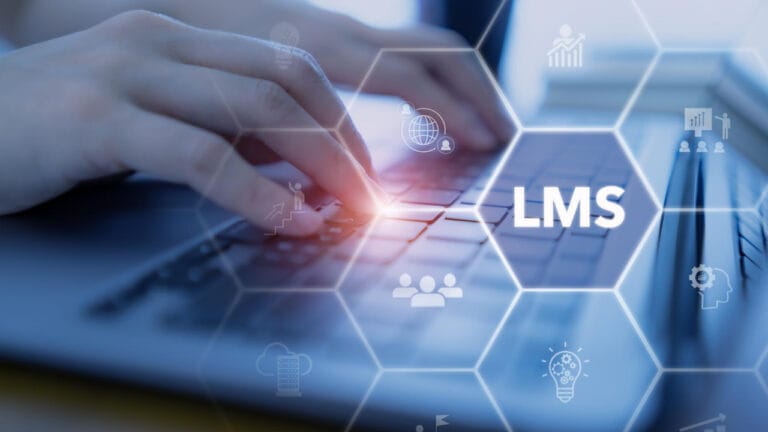Navigating the world of business software can be overwhelming, especially when it comes to choosing between a Learning Management System (LMS) and a Human Resource Management System (HRMS). Both play crucial roles in streamlining operations, but they serve distinct purposes that cater to different needs within an organization.
You might wonder which system is right for your company. An LMS focuses on training and development, ensuring your team has the skills needed to excel. On the other hand, an HRMS handles various HR functions like payroll, benefits administration, and employee records. Understanding their unique features can help you make an informed decision that aligns with your business goals.
When considering the functionalities of a Learning Management System (LMS) versus a Human Resource Management System (HRMS), it’s important to understand how each system addresses different aspects of business operations and can be complementary to each other in terms of skilling and performance management. An LMS focuses specifically on the delivery and management of training programs, enabling organizations to enhance employee skills and track learning progress effectively. On the other hand, an HRMS encompasses a broader range of human resource functions, such as payroll, recruitment, and performance management.
Bytecasting LMS exemplifies how integrating these two systems can streamline processes by aligning training initiatives with workforce management. This integration ensures that employee development is not only tailored to organizational needs but also supports overall HR strategies. By recognizing the distinct roles of an LMS and HRMS, businesses can make informed decisions that enhance both employee training and overall organizational efficiency.
Understanding LMS and HRMS
Learning Management Systems (LMS) manage training programs, learning content, and educational courses. They facilitate online learning by providing tools for course creation, assessment management, and progress tracking.
Human Resource Management Systems (HRMS) streamline HR processes such as payroll management, employee data storage, benefits administration, and time tracking. These systems help automate routine tasks to improve efficiency in managing human resources. Examples include Workday, SAP SuccessFactors, and ADP Workforce Now.
Both LMS and HRMS offer unique functionalities designed to address specific business needs. An LMS enhances employee skills through structured learning paths while an HRMS optimizes the administrative functions of human resource departments. Understanding these differences ensures that you select the right system based on your company’s operational goals.
Understanding the key features of Learning Management Systems (LMS) and Human Resource Management Systems (HRMS) helps in selecting the right solution for your company. Each system offers unique functionalities tailored to different business needs.
LMS Features
Course Management: An LMS allows you to create, manage, and deliver educational courses efficiently. Moodle, for instance, supports a wide range of course formats.
Content Delivery: An LMS enables seamless delivery of learning materials. SCORM-compliant systems ensure compatibility across various platforms.
Progress Tracking: Track employee progress through assessments and quizzes. This feature provides insights into individual performance and course effectiveness.
Certification: Automate certificate issuance upon course completion. This maintains compliance with industry standards and fosters professional development.
Engagement Tools: Utilize forums, chat rooms, and discussion boards to enhance learner engagement. Gamification elements like badges also boost motivation.
HRMS Features
Employee Records: Maintain comprehensive employee records including personal details, job history, and performance reviews. Workday excels in this area with robust data management capabilities.
Payroll Management: Automate payroll processes ensuring accurate calculations and timely payments. Integrations with accounting software further streamline operations.
Benefits Administration: Manage employee benefits such as health insurance efficiently. Self-service portals allow employees to access their benefits information easily.
Time Tracking: Monitor attendance, leave requests, and work hours accurately. Biometric integrations reduce errors in timekeeping practices.
Performance Appraisal: Conduct performance reviews systematically using customizable templates. This aids in identifying areas for improvement and recognizing top performers.
By focusing on these core features within each system type LMS for training initiatives and HRMS for human resource functions you can better align your choice with your organizational goals.
Benefits of LMS
Learning Management Systems (LMS) offer several benefits that enhance business operations and employee development.
Employee Training and Development
LMS streamlines employee training by providing centralized learning resources. Courses, videos, and modules are easily accessible to employees. This accessibility improves consistency in training delivery across the organization. You can track individual progress through detailed analytics, identifying areas where additional support is needed. Automated reminders ensure that employees complete required training on time.
Compliance and Reporting
LMS helps organizations stay compliant with industry regulations by automating compliance training. Courses covering mandatory topics like data protection or workplace safety are consistently delivered to all relevant employees. The system generates comprehensive reports detailing course completions and certifications, making it easier for you to demonstrate compliance during audits.
Benefits of HRMS
HRMS offers several advantages that can significantly improve HR operations and overall business efficiency. It provides tools for managing performance, generating workforce analytics, and more.
Performance Management
HRMS streamlines performance management. It automates appraisals, tracks employee goals, and facilitates continuous feedback. This system allows you to set clear objectives and monitor progress easily. Employees receive timely feedback that helps them align their efforts with organizational goals. For example, platforms like Workday provide detailed performance reports that aid in making informed decisions about promotions and development plans.
Workforce Analytics
HRMS enhances workforce analytics by offering comprehensive data insights. You can analyze various metrics such as employee turnover rates, hiring trends, and attendance patterns. These insights help identify areas for improvement within your organization. By leveraging this data, you can make strategic decisions about staffing needs and resource allocation. Tools like SAP SuccessFactors offer robust analytics features that support effective workforce planning.
LMS:
- Course Management: Organizes and delivers training courses.
- Content Delivery: Distributes learning materials efficiently.
- Progress Tracking: Monitors learner advancements through analytics.
- Certification Automation: Issues certificates upon course completion.
- Engagement Tools: Enhances interaction with quizzes and forums.
HRMS:
- Employee Records Management: Maintains comprehensive employee data.
- Payroll Management: Automates salary calculations and disbursement.
- Benefits Administration: Manages health insurance, retirement plans, etc.
- Time Tracking: Records working hours and attendance patterns.
- Performance Appraisal Systems: Evaluates employee performance periodically.
LMS vs HRMS: Key Differences
When comparing LMS to HRMS, it’s essential to understand their core functionalities and unique benefits. While both systems aim to streamline business operations, they serve distinct purposes tailored to different aspects of an organization.
Focus Area
LMS: Primarily concentrates on training and development. It manages educational courses, training programs, learning content, and learner progress.
HRMS: Centers around managing HR functions such as payroll, employee records, benefits administration, and time tracking.
Case Study:
A global financial services company partnered with Stratbeans to integrate their Learning Management System (LMS) with their existing Human Resource Management System (HRMS). The company faced challenges in tracking employee training and linking it to performance outcomes. Stratbeans implemented a customized LMS solution that was integrated with the HRMS, allowing performance reviews conducted in the HRMS to automatically trigger targeted training programs through the LMS.
For example, if an employee’s performance review identified a gap in compliance knowledge, the system automatically assigned relevant compliance training through the LMS. The integration streamlined the onboarding process, reduced training completion time by 25%, and improved employee performance consistency. Managers gained access to unified reports that combined learning progress with performance data, helping them make better-informed decisions about promotions and development plans.
Integration Tip:
When integrating an LMS with an HRMS, work with a provider like Stratbeans that offers tailored integration solutions. Ensure the systems have API compatibility to enable seamless data flow between training outcomes and performance metrics. Regularly monitor performance data to adjust training content and delivery methods, ensuring alignment with business goals and employee development needs.
Integration Capabilities
Seamlessly integrates with various e-learning tools like SCORM (Sharable Content Object Reference Model) packages for standardizing content delivery across platforms.
Integrates with accounting software like QuickBooks for streamlined financial management or recruitment platforms like LinkedIn Talent Solutions to enhance hiring processes.
Data Analytics
Both systems offer robust analytics but differ in focus:
Provides insights into learner engagement metrics such as course completion rates and knowledge retention statistics. These analytics help tailor future training programs for better outcomes.
Offers workforce-related data insights including turnover rates, hiring trends, and performance metrics. These insights support strategic decision-making regarding staffing needs and resource allocation.
Compliance Support
Compliance is another critical area where these systems differ:
Ensures adherence to industry-specific standards by automating compliance training modules. Provides detailed reports on certifications necessary during audits or regulatory inspections.
Helps maintain legal compliance in employment practices by tracking labor laws adherence concerning payroll processing or benefits administration. Generates necessary documentation during audits or legal reviews.
Understanding these key differences will guide you in selecting the right system that aligns with your organizational goals whether it’s enhancing employee skills through an LMS or optimizing HR operations via an HRMS.
Integrating Learning Management Systems (LMS) with Human Resource Management Systems (HRMS) can significantly enhance organizational efficiency. This integration helps streamline processes, improve data accuracy, and provide comprehensive insights.
Benefits of Integration
Integration offers several benefits:
- Unified Data Management: Centralized employee data from both systems reduces redundancy and ensures consistency. For example, training records in the LMS automatically update employee profiles in the HRMS.
- Improved Reporting: Consolidated data enables more detailed reporting on employee performance, training progress, and compliance status. Managers can generate holistic reports that track both learning outcomes and performance metrics.
- Enhanced Employee Experience: Seamless access to training materials and HR services creates a smoother experience for employees. They can easily find necessary resources without switching between platforms.
- Automated Processes: Automating routine tasks like enrollment in mandatory courses based on role changes or promotions saves time. Notifications about upcoming training sessions or deadlines are also streamlined.
Potential Challenges
Despite the advantages, integration presents some challenges:
- Technical Compatibility: Ensuring that both systems communicate effectively requires robust API connections or middleware solutions. Incompatible software versions can complicate this process.
- Data Security Concerns: Integrating systems increases the complexity of managing sensitive information. It’s crucial to implement stringent security measures to protect personal data across platforms.
- Cost Implications: Initial setup costs for integration might be high due to customization needs and potential third-party services. Ongoing maintenance expenses should also be considered.
- Change Management: Employees may need additional training to adapt to integrated workflows. Clear communication strategies help mitigate resistance to change.
By understanding these benefits and challenges, you can make informed decisions about integrating LMS with HRMS for optimal organizational effectiveness.
Final Thoughts
Choosing between LMS and HRMS ultimately hinges on your organization’s specific needs. Both systems offer distinct advantages that can significantly enhance business operations. An LMS is crucial for effective employee training and development, providing centralized resources and robust tracking tools. On the other hand, an HRMS excels in managing various HR functions like payroll, benefits administration, and performance appraisals.
Integration of the two systems can further streamline processes and improve data accuracy. While challenges such as technical compatibility and cost implications exist, the potential benefits make it a worthy consideration. By understanding each system’s unique features and aligning them with your operational goals, you can make an informed decision that drives both efficiency and growth within your organization.


